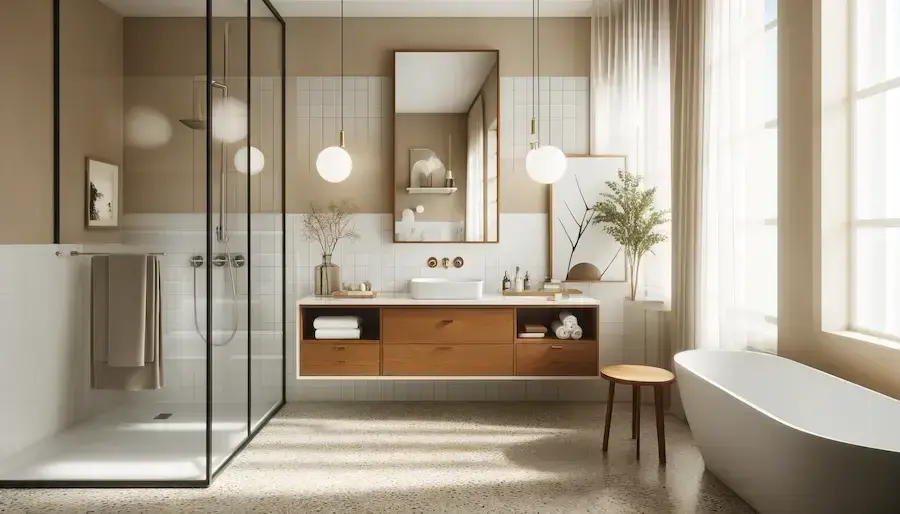Mid-century modern bathrooms blend functionality with sleek aesthetics, drawing inspiration from design trends of the mid-20th century. This article explores their origins, key features, applications, and considerations for incorporating mid-century modern elements into your bathroom.
Introduction to Mid-Century Modern Bathrooms
Emerging between the 1940s and 1960s, mid-century modern design emphasizes clean lines, organic shapes, and minimal ornamentation. In bathrooms, this translates to streamlined fixtures, geometric patterns, and a harmonious balance between form and function.
History and Origins of Mid-Century Modern Bathrooms
The mid-century modern movement arose as a response to the ornate styles of previous eras, focusing on simplicity and practicality. Advancements in materials like Formica and fiberglass allowed for innovative designs in bathroom fixtures and surfaces, promoting a sleek and efficient aesthetic.
Key Features of Mid-Century Modern Bathrooms
Incorporating mid-century modern elements can transform a bathroom into a stylish retreat:
- Clean Lines and Geometric Shapes: Emphasize simplicity with unadorned fixtures and furnishings featuring straight lines or gentle curves. Geometric tile patterns can add visual interest while maintaining a minimalist aesthetic.
- Natural Materials: Incorporate wood, especially teak or walnut, to introduce warmth. A wooden vanity or shelving can provide a natural contrast to sleek surfaces.
- Bold Color Accents: While the base palette often includes neutral tones, adding pops of color like mustard yellow, teal, or burnt orange can evoke the era’s vibrant spirit. This can be achieved through accessories, tiles, or artwork.
- Functional Layouts: Design with efficiency in mind, ensuring that the bathroom layout is practical and user-friendly. Built-in storage solutions and thoughtful placement of fixtures contribute to functionality.
- Vintage-Inspired Fixtures: Select fixtures that reflect mid-century designs, such as wall-mounted sinks, freestanding bathtubs with tapered legs, or retro-style faucets. These elements reinforce the period aesthetic.
Applications of Mid-Century Modern Bathrooms
Mid-century modern bathroom designs can be adapted to various settings:
- Residential Homes: Introduce mid-century elements to create a timeless and elegant bathroom that complements contemporary living spaces. This style’s emphasis on functionality and simplicity makes it suitable for modern households.
- Boutique Hotels: Incorporate mid-century modern designs to offer guests a nostalgic yet chic experience, enhancing the establishment’s appeal. The distinctive aesthetic can set the hotel apart and provide a memorable stay.
- Renovation Projects: Updating older properties with mid-century modern bathrooms can add value and attract admirers of retro design. The style’s enduring popularity ensures broad appeal.
Considerations When Choosing Mid-Century Modern Bathroom Elements
When designing a mid-century modern bathroom, consider the following:
- Authenticity vs. Modern Needs: While aiming for a mid-century aesthetic, ensure that fixtures meet current standards for water efficiency and durability. Modern reproductions can offer the best of both worlds.
- Space Constraints: Adapt mid-century design principles to fit the bathroom’s size, avoiding overcrowding while maintaining functionality. For smaller spaces, focus on key elements like color schemes and fixtures to convey the style.
- Maintenance: Choose materials and finishes that are easy to clean and maintain, preserving the bathroom’s appearance over time. For example, select tiles and surfaces that resist staining and moisture damage.
Conclusion
Mid-century modern bathrooms offer a blend of retro charm and contemporary functionality. By understanding their origins and key features, you can create a bathroom that reflects the elegance of the mid-20th century while accommodating modern needs, resulting in a timeless and inviting space.
